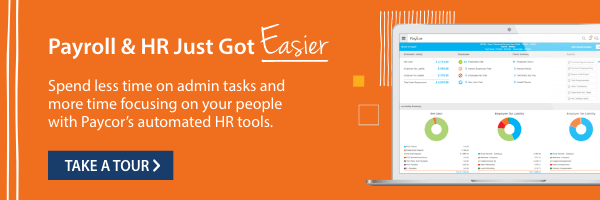Minnesota’s new Earned Sick and Safe Time (ESST) policy went into effect on January 1, 2024. HR leaders might be scrambling to update their policies and stay compliant. As you implement these sweeping changes, here’s what you need to keep in mind:
Definition of Sick and Safe Time:
Sick and safe time is paid leave for employees who are sick, caring for certain sick family members, or seeking help due to domestic violence, sexual assault, or stalking.

Who Gets Sick and Safe Time:
A worker is eligible for paid sick and safe time if they:
- Work at least 80 hours in a year* for an employer in Minnesota; AND
- perform work in Minnesota (the law does not apply to remote workers in other states); AND
- are not an independent contractor.
- Temporary and part-time employees can earn sick and safe time, as long as they meet all of the above criteria.
- *Note that employers can define a “year” as a calendar year, a fiscal year, or by the employee’s work anniversary date.
- There’s one exception to the above criteria. If an employee:
- Works in the building and construction industry; AND
- Is represented by a trades labor organization; AND
- A valid waiver of ESST requirements is included in a collective bargaining agreement,
…then these regulations won’t apply to them.

How Employees Earn Sick and Safe Time:
For every 30 hours an employee works, they earn 1 hour of paid sick and safe time. Employees can earn up to 48 hours per year. Employers can also agree to let employees earn more than 48 hours, but that isn’t required by law.
Rate of Payment for Sick and Safe Time:
When using ESST, employees get paid the same hourly rate they normally earn.

Reasons an Employee Can Use ESST:
Employees can use sick and safe time when they or a family member experience any of these events:
- Physical or mental illness, treatment, or preventive care
- Domestic violence
- Sexual assault
- Stalking
- Risk of infecting others with a communicable disease, such as COVID-19 (as determined by a health authority or health care professional)
- Employees can also use sick and safe time when they experience:
- Workplace closure due to inclement weather
- Workplace closure due to a public emergency
- Finally, employees can use their earned sick and safe time when a family member experiences:
- School or care facility closure due to inclement weather
- School or care facility closure due to public emergency
- Employers have the right to request medical certification if an employee uses ESST for 3 or more consecutive days. This may be more complex for employees with disabilities, as employers also need to comply with ADA and FMLA regulations.

Qualifying Family Members for Sick and Safe Time:
Per the new ESST rules, employees can use their paid time off when they or a family member faces certain problems. For the purposes of ESST, here’s who counts as a family member:
- Their child, including biological children, adult children, foster children, and any child for whom the parent is a legal guardian
- Any child for whom the employee stands or stood in loco parentis (in place of a parent)
- The employee’s spouse or registered domestic partner
- Their sibling, including stepsiblings and foster siblings
- Their parents, including biological, adoptive, and foster parents, stepparents, and any person who stands or stood in loco parentis when the employee was a child
- Their grandchild, foster grandchild, or step-grandchild
- Their grandparent or step-grandparent
- A child of their sibling
- A sibling of their parents
- A child-in-law
- A sibling-in-law
- Any of the above family members of their spouse or registered domestic partner
- Any blood relation with whom the employee has a close, familial relationship
- Up to one person who does not appear elsewhere on this list, designated annually by the employee

Employers’ Additional Responsibilities:
In addition to the above requirements, employers must provide their teams with these notifications and resources:
• The employee’s total number of earned ESST hours, including available and used hours, on the earning statement for each pay period.
• A notice by January 1, 2024, or on the employee’s start date (whichever comes later) informing them of ESST regulations. This notice must be in English or in the employee’s primary language.**
• A notice describing ESST in the employee handbook, if the company has an employee handbook.
**Note that the state of MN has written a standard employee notice for employers to use. It is written in English and translated into 17 other languages, and employers can request the notice in additional languages.
Local ESST Regulations in Bloomington, Minneapolis, and St. Paul:
These three cities have preexisting local ESST ordinances. If their local ordinances conflict with state law, employers should follow whichever regulation is most favorable to employees.
How to Stay Compliant:
These new rules represent a fundamental shift in how MN employers need to calculate paid time off. And it’s an urgent issue, since the laws took effect on January 1, 2024. If you haven’t already started tracking ESST, the clock is ticking.
Paycor’s suite of HCM technology automates complex compliance issues like this one. For instance, our Time and Attendance software can make updates based on your company’s unique policies. You can easily set up a rule to track each worker’s sick and safe time, including earned hours and time they’ve already used.
With so many new compliance issues to deal with some Minnesota HR leaders are worried their state is turning into the next California. Paycor can help you manage new regulations as they arise. Use our HR tools to update the employee handbook, review requests for time off, and track your employee’s accrued ESST, all in the same place.
In any state, Paycor can help you stay compliant with changing compliance laws. Contact us today to learn more.










